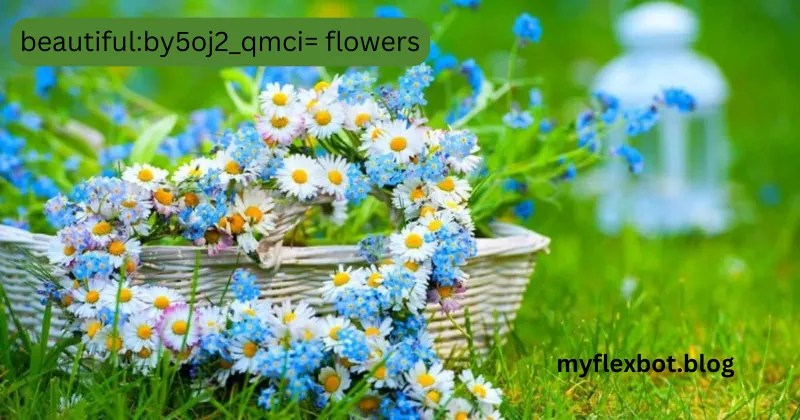Flowers have captivated humanity for centuries with their breathtaking beauty, vibrant colors, and mesmerizing scents. From the delicate petals of a rose to the intricate forms of an orchid, flowers hold a significant place in our lives. They are symbols of love, friendship, and remembrance, and they play vital roles in ecosystems, providing nourishment and habitat for various species. In this article, we will explore the world of beautiful flowers, their diversity, significance in different cultures, and how to care for them.
The Diversity of Beautiful Flowers
The term “beautiful flowers” encompasses a vast array of species and varieties, each with its unique characteristics. Here are some renowned categories of beautiful flowers worth mentioning:
1. Roses
Roses are among the most popular flowers globally, celebrated for their romantic symbolism and stunning visual appeal. With varieties ranging from classic red to vibrant yellows and delicate pinks, they come in an assortment of sizes and fragrances. The different colors of roses carry distinct meanings, such as red for love, yellow for friendship, and white for purity.
2. Orchids
Orchids are known for their exotic appearance and come in thousands of species. Their intricate shapes and wide array of colors make them a favorite among florists and gardeners alike. Orchids often symbolize luxury and beauty, making them a popular choice for special occasions.
3. Sunflowers
Sunflowers are recognizable for their large, vibrant heads that resemble the sun. Known for their warmth and cheerfulness, sunflowers bring a sense of joy to any garden. They also have practical uses, as sunflower seeds are a nutritious snack and can be processed into oil.
4. Lilies
With their elegant form and delightful aroma, lilies are a favorite in many arrangements. They represent purity and refined beauty. Lilies come in various colors, including pink, orange, and white, and they can often be found in both wild and cultivated forms.
5. Tulips
Tulips burst into life every spring, filling gardens and landscapes with a riot of color. Originating from Central Asia, tulips became cultural icons in the Netherlands, where extensive cultivation has led to many varieties. They symbolize elegance and grace, making them popular for both gardens and cut flower arrangements.
6. Daisies
Daisies exude a sense of innocence and purity with their charming, simple structure. They are often seen in wildflower fields and are celebrated for their resilience and ability to grow in various conditions. Daisies can represent loyalty and new beginnings.
The Importance of Flowers in Culture
Flowers have always had a prominent role in human culture, serving various purposes:
Celebrations and Ceremonies
Flowers are integral to many celebrations, such as weddings, birthdays, and religious ceremonies. Their beauty enhances the ambiance and carries emotional significance. For example, lilies are often associated with funerals, symbolizing the purity of the deceased’s soul.
Art and Literature
Throughout history, flowers have inspired countless artists and writers. They appear in paintings, poems, and songs, symbolizing different emotions and ideas. Famous works like Van Gogh’s “Sunflowers” and Shakespeare’s references to roses show the deep-rooted connection between flowers and human expression.
Healing and Wellness
Many cultures utilize flowers for their therapeutic properties. Aromatherapy, herbal medicine, and homeopathic practices often involve the use of flowers for healing. Lavender, for instance, is well-known for its calming properties, while chamomile is favored for its soothing effects.
Culinary Uses
Beyond their beauty, some flowers are edible and enhance culinary creations. Ingredients like nasturtiums, pansies, and hibiscus flowers can be used in salads, teas, and even desserts, adding flavor and visual appeal to dishes.
Caring for Beautiful Flowers
Caring for beautiful flowers, whether in a garden or as houseplants, requires knowledge and attention. Here are some tips for proper flower care:
Watering
Flowers have different water needs. While some prefer consistently moist soil, others thrive in drier conditions. It’s crucial to understand the specific requirements of each flower to ensure they flourish. Always check the top inch of soil before watering.
Sunlight
Light requirements vary significantly among flower species. Some flowers thrive in full sun, while others prefer partial shade. Be sure to place your flowers in a location that aligns with their sunlight needs.
Fertilization
Regular fertilization can promote healthy growth and vibrant blooms. Use a balanced fertilizer during the growing season, following instructions for application to avoid over-fertilizing.
Pruning and Deadheading
To encourage new growth, regularly prune and deadhead spent blooms. This practice prevents plants from going to seed and redirects energy into producing more flowers.
Pest Management
Flowers can be susceptible to pests, such as aphids and spider mites. Regularly inspect your plants and use organic methods or insecticidal soaps to manage infestations.
FAQs About Beautiful Flowers
Q1: What are some popular flowers to grow in a home garden?
A1: Popular choices include roses, daisies, sunflowers, tulips, and lavender due to their beauty and relatively easy care requirements.
Q2: How long do cut flowers typically last?
A2: The lifespan of cut flowers varies. Most last 5-10 days; however, lilies, roses, and sunflowers can last longer with proper care, including fresh water and trim of stems.
Q3: What do different flower colors signify?
A3: Flower colors carry unique meanings. For example, red rose symbolizes love, yellow evokes friendship, and white denotes purity.
Q4: Can I grow flowers indoors?
A4: Yes! Many beautiful flowers, such as peace lilies, African violets, and orchids, are suitable for indoor growth.
Q5: What are the best conditions for growing orchids?
A5: Orchids prefer indirect light, high humidity, and well-draining potting media. Consistent temperature and careful watering are also crucial.
Conclusion
Flowers are more than just ornamental objects; they are powerful symbols that connect us to nature, culture, and emotion. Understanding the diversity and significance of beautiful flowers can enhance our appreciation for them and elevate our experiences, whether through gardening, celebrating special occasions, or simply enjoying their presence. By nurturing and caring for flowers, we can create exquisite displays while respecting the vital roles they play in our ecosystems. Whether you are a seasoned gardener or a curious beginner, the world of beautiful flowers is an endless adventure waiting to be explored. Embrace the beauty that flowers bring into our lives, and let them inspire joy and connection to the world around us.



Leave a Reply